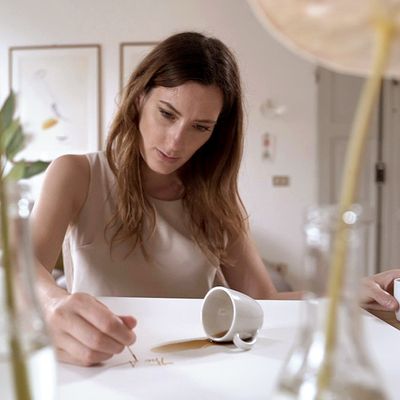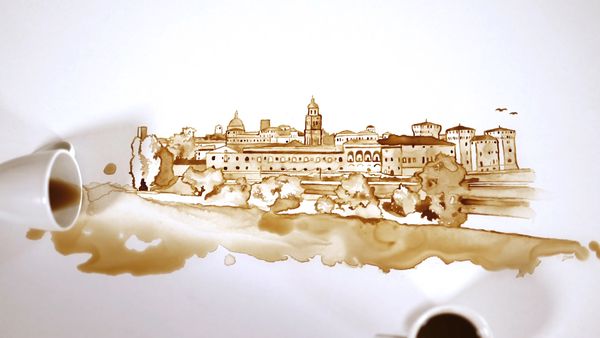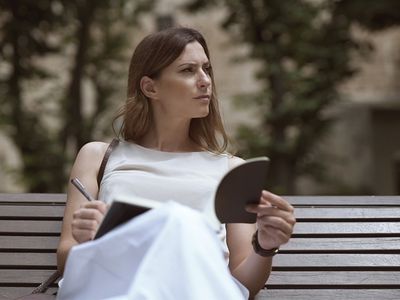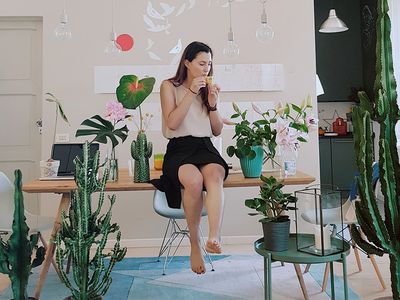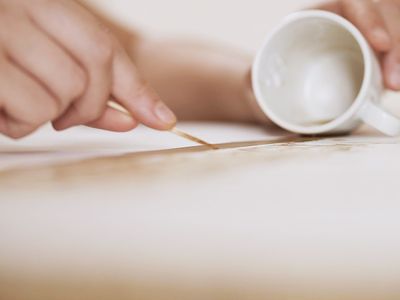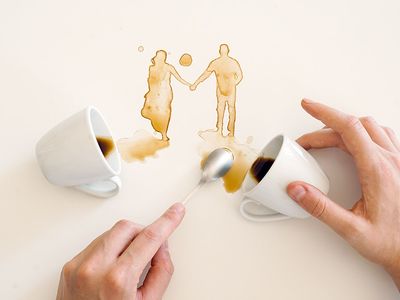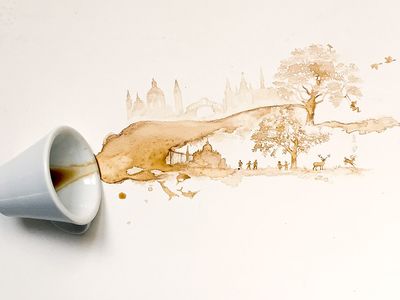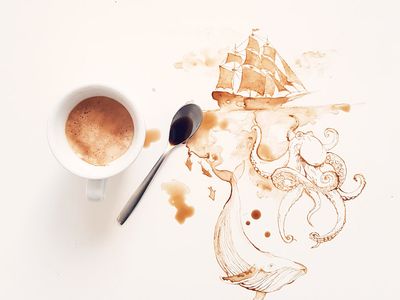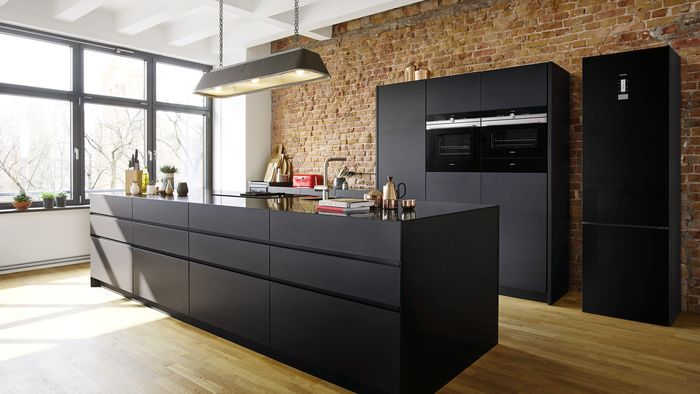Where it all began – the creative atmosphere of Mantua.
“My future starts when I wake up every morning. Every day I find something creative to do with my life”, Giulia Bernardelli says. One morning, Giulia was drawing while having her coffee. Suddenly, she moved her hand too quickly and tipped over her cup. And this was the starting point of doing art with coffee.
Mantua is Giulia’s home town and one of the main artistic and cultural hubs of Northern Italy. It is known for its architectural treasures, artefacts and elegant palaces – its old town was declared by UNESCO to be a World Heritage Site. In 2016, Mantua became the Italian Capital of Culture. In 2017, Mantua was the European Capital of Gastronomy.
It is the place where Romeo was banished in Shakespeare’s play Romeo and Juliet. And it is the place where Giulia Bernardelli was born and began her creative journey.
When Giulia was growing up, she was surrounded by art, architecture and the magical atmosphere inside the stunning historical buildings of Mantua. The creative environment in her childhood shaped her, but also her love to travel around the world and exploring big, metropolitan cities nowadays influences her creativity. “I feel like the spirit of urban living flows into my artwork”, she says. Coffee has been part of her daily life for a long time. It represents not only a way of getting together with people, but also a way that she connects with her art.
Is it important which coffee (beans/water/roasts) you use for your artworks? Are there influencing factors in the artwork?
Coffee used for artistic purpose is a whole other matter because it is appreciated exclusively from an aesthetic point of view. However, it is true that the intensity of a coffee affects its colour so I usually start with a really dark strong coffee then I dilute it until its hues becomes extremely clear like American coffee. Every coffee is brewed by my EQ.9 that has now become a member of my family.
What do you do when you’re out of ideas? What is your creative inspiration?
Everything can be a source of inspiration, even everyday life: a ray of sunshine lighting a room so perfectly, mugs arranged in a chromatic order, a cup of coffee … and then I have trips, long or brief ones, getting to know other cultures, losing myself in nature, but also reading a book or listening to a song. Every creation is the result of a situation or a mood. My best creations come when I’m happy. When I’ve run out of ideas, I shelter under the sources of beauty I surround myself with and search for my balance.
What city destinations would you recommend to enjoy art, culture, and food and drink?
Every place can enrich us and teach us something new. Travelling puts things into perspective and teaches us to get to know ourselves and be open to new opportunities.I have always loved countries with a culture that is much different to mine, like Japan: I visited it twice, and, there, food is about gestures and traditions and its essence and meaning. It is also home to the most beautiful museums I have ever seen; where the real works of art were the buildings themselves; where I learnt how nothing is a whole; where I learnt the true art of “less is more” – such a foreign concept in Italian culture. But you don’t need to go to the other end of the world – Berlin and Istanbul astonished me as well: the former for its innovation and the latter for its food and ancient customs.
How do you see the coffee culture in Italy (especially in Mantua). Do you have special rituals and coffee varieties that you prefer?
Being Italians, we love coffee with all our heart, but the problem with us is that we consider ourselves to be the best in this field [laughs]. And this includes myself – “How can you have a quality coffee if it is not an espresso?”. But I was wrong! In bars across Italy, having a coffee is often a moment to be shared, an excuse to get together or have a break, and quality is not always essential. But quality actually is essential and people are becoming more and more aware of coffee culture, and then different coffee extraction methods are studied and used today: they are very fashionable in big cities but are also slowly making their way to little towns like Mantua. I have become a fan of cold water extraction, also called cold brew, that releases the flavours without heating the coffee.
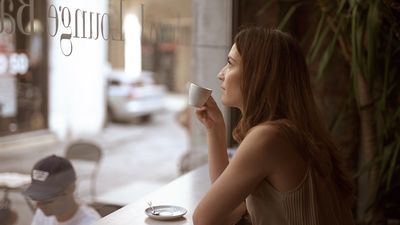
How coffee culture is characterised in Italy.
If you think of Italian coffee, you naturally initially think of a delicious espresso. Espresso is the basis of Italian coffee culture, which is refined with milk and milk foam, depending on your personal taste. This is especially thanks to professional fully automatic coffee machines and capsule machines, which are becoming increasingly popular.
Italian coffee is roasted from very dark beans. This requires a special skill from the roaster. There is a reason why there are still many small roasters in Italy, the so-called “torrefazione artigianale”. The roasting masters have many years of experience and manage to roast the coffee beans slowly to the desired result.
They press hot water with high pressure through the finely ground coffee from the dark roasted beans. This creates a foam from the coffee bean oils – the Italians call this crema. The slow but stronger roasting also gives the Italian coffee its characteristic aroma. The bitter substances lower the caffeine and acid content of the espresso and make it easier to digest. The bitterness is traditionally balanced with a lot of sugar.
Part of the dolce vita and coffee culture in Italy is to take a sip of still water with a coffee or cappuccino. That is why a small glass of water is traditionally served directly with a cup of coffee.
What was the best coffee you have ever had? What was different about it?
The mind and heart need to work together to make the best coffee – always respecting the raw material and highlighting its qualities with the techniques used. Caring is what makes all the difference, in every field of life. Talking about a specific experience, when I was an undergraduate in Bologna, I used to have my favourite roastery: coffee was carefully selected, roasted and tasted there, and caring was an all-around feeling. I could sense it even in the scented air. It was not just coffee, but a cup of new meanings, new trips and new feelings. That ability to make an everyday action so special stuck with me and became the foundation of my work time after time.
How do you prepare your perfect coffee moment at home?
Having coffee at home shapes my day. The first is when I wake up is a cappuccino. The second is after lunch – an American coffee or espresso. It’s my shot of happiness before going back to work. Coffee is always associated with pleasant moments. Although I have a strong passion for coffee, I don’t consider myself an expert. But that’s about to change. Siemens Coffee World and I are going on journeys and visiting cities in Europe to explore and learn all about this amazing culture. Our first journey took us to Berlin, where we visited a coffee roastery and met Ersin who explained a lot about the roasting process.
What insights did you get from Ersin from Coffee Circle in the Berlin coffee roastery?
It was amazing to see the process of selection and roasting – all the work behind a seemingly uncomplicated drink that almost everyone has every day. And this is only one of the final stages of preparation: if I think about plantations, picking and shipping, I get dizzy! It was a real honour to see all of this.

Accompany Giulia on her trip to Berlin.
Roasting is a craft that is critical for the taste of the coffee. Learn more about the different roasting profiles for each coffee that give us different blends.
Go to Berlin episode
